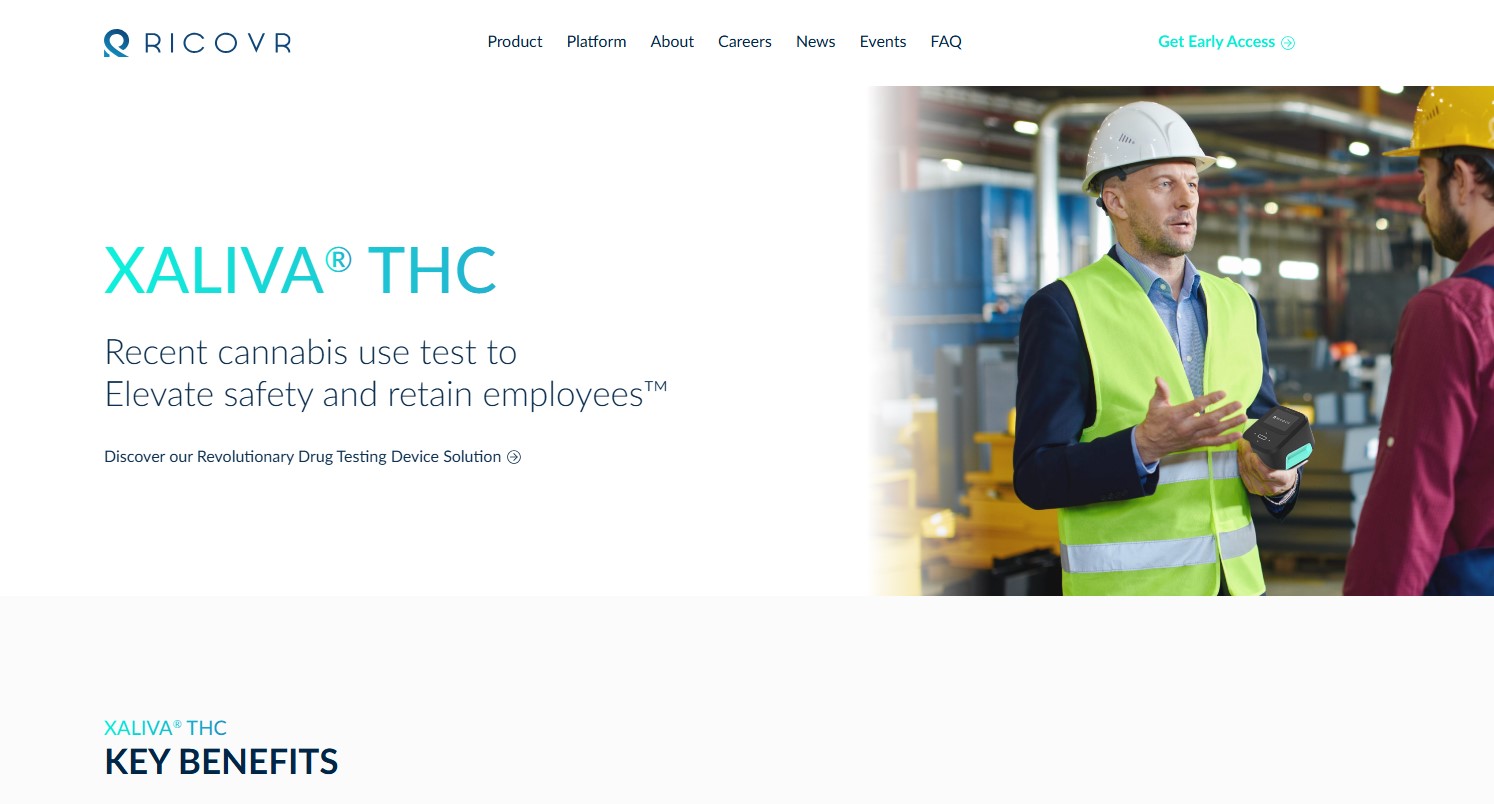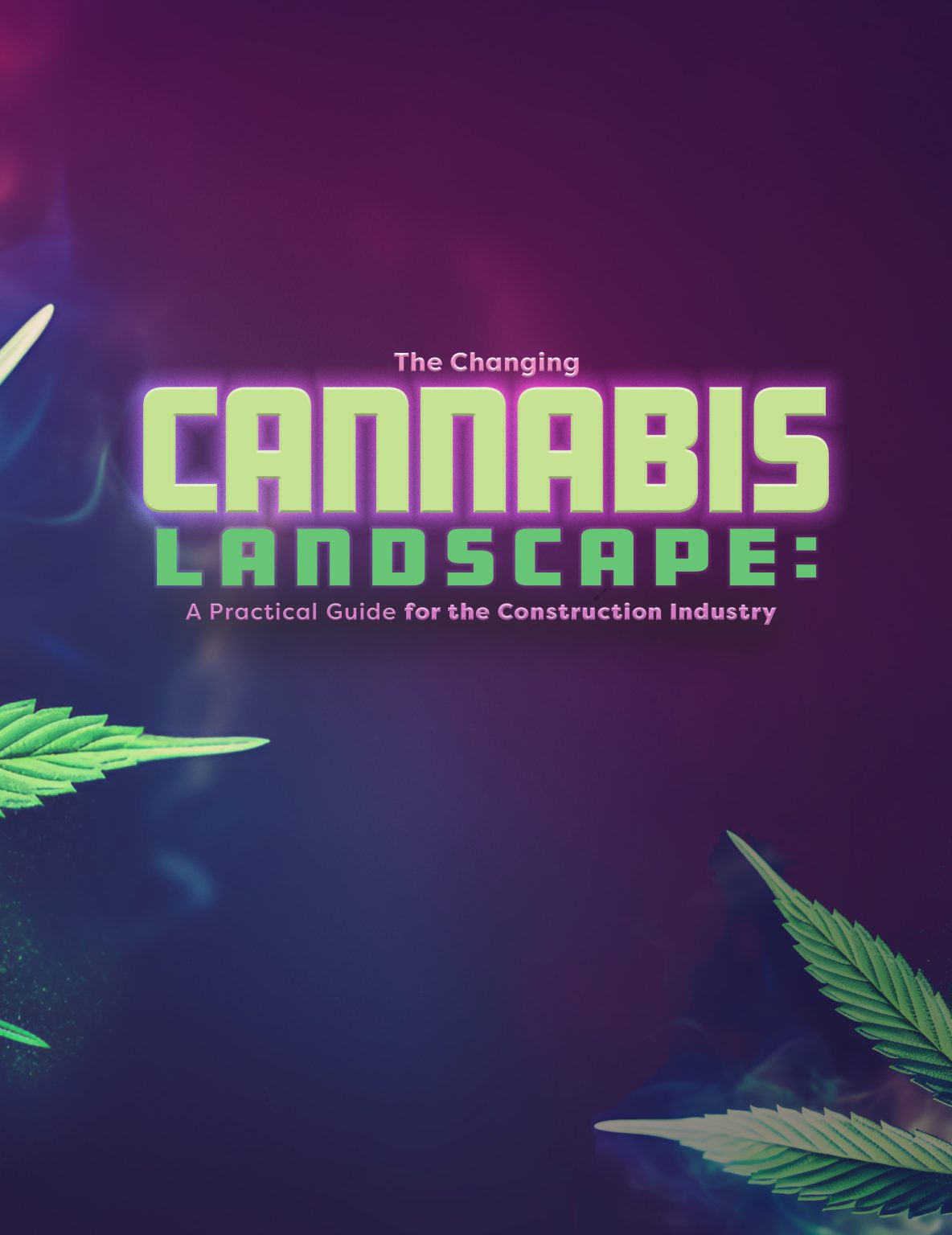Marijuana (THC) Impairment & Workplace Drug Testing

By RICOVR Healthcare
Joseph Seimetz, PhD, Senior Scientist
The latest science on marijuana (THC) impairment
According to the National Highway Traffic Safety Administration (NHTSA), smoking marijuana impairs many driving-related skills, such as reaction time, decreased divided attention, cognitive performance, route planning, decision-making, and risk-taking. (1)
In one of the largest impairment studies of its kind, “Driving Performance and Cannabis Users’ Perception of Safety,” showed that both frequent and occasional marijuana users were impaired during a simulated driving task for up to 4.5 hours after smoking cannabis. In this randomized, controlled clinical trial of 191 participants, the researchers told participants to “smoke the [marijuana] cigarette the way you do at home to get high,” thus allowing participants to self-dose themselves to achieve a typical high. Participants were then tasked with performing the driving simulation several times over the course of 4.5 hours; each time before driving, they were asked, “How high are you?” and “Would you drive in your current state?” to assess their self-perceived level of impairment. (2)
The researchers found significant declines in driving performance at 30 minutes, 1 hour and 30 minutes, and 3 hours and 30 minutes post-smoking. Alarmingly, despite being impaired, nearly 50% of participants said they would drive in their current state at 30 minutes, 70% said they would drive at 1.5 hours, and 90% said they would drive at 3.5 hours. (2) The disconnect between actual impairment and self-perceived impairment is a critical public safety concern that further highlights the need for accurate and rapid THC detection on-site for law enforcement and employers.
In a parallel study involving the same 191 participants, Hoffman et al. measured the concentration of THC and its metabolites in both blood and saliva over 5.5 hours post-smoking. The authors noted that concentrations of THC were more variable in blood samples compared to saliva,” supporting improved utility for [saliva] drug testing.” THC continued to be detectable in saliva at 4.4 hours post-smoking in 87.5% of participants, while half had fallen below a 5 ng/mL cutoff by that time. (3) This finding demonstrates the ability of saliva to provide detection at specified cutoffs to achieve the desired detection window. When considering the additional benefits of saliva as a test matrix due to its non-invasive nature and ease of collection, saliva is the ideal method for the detection of recent marijuana (THC) use during the entire window of impairment.
How does this new impairment study impact the workplace?
This study demonstrates significant impairment for up to 4.5 hours following the smoking of cannabis. Other studies have shown the window of impairment can be as long as 12 hours depending on the task measured, the amount of THC consumed, the method of THC consumption, the frequency of consumption, as well as physiological differences between participants. (4,5)
As an employer, you should structure your drug testing policy to account for the full impairment window to create a fair and safe work environment for all your employees throughout the day. This policy requires accurate, easy-to-collect, rapid, point-of-care technology that can detect recent marijuana (THC) use over the entire window of impairment: saliva testing can check all of these boxes.
THC detection in the workplace: Breath vs Saliva
Several marijuana breathalyzer companies are marketing themselves as only being able to detect within a 2-to-3-hour window of “peak impairment,” but what this actually means is that they are not able to detect the entire window of impairment. Even in academic studies, the limit of detection for THC in breath was found to be less than 3 hours. (6-8) Based on the scientific evidence, breath is an inadequate technology for detecting recent THC use within the entire window of impairment, and relying on the breath for drug testing policies could lead to negative and even dangerous outcomes in the workplace. In addition, the detection windows claimed by the breathalyzer companies don’t account for timing and sample collection complications in the real world, which increases the relevant detection window.
Real-world Scenario of an Employee Getting “High” before Work
With nearly 40% of recreational marijuana users admitting to going to work high at least once per week, let’s examine a real-world scenario of an employee getting high before work and how a drug testing policy relying on either breath or saliva would play out: (9)

As depicted in Fig. 1, an employee smokes in their car before entering the workplace at 8:45 am. Just before lunch at 11:30 am, there is an incident involving an impaired employee, but the supervisor, who is trained to use the THC detection device, has already left to take their lunch. When the supervisor returns to the workplace, it is 12:30 pm, and a sample from the employee is taken at 12:45 pm. But now it has been 4 hours since they smoked and would come back negative on a breath test. Thus, we can see that even if an incident occurs during the “peak impairment” window, it is possible that using THC breathalyzer technology is inadequate. In this real-world example, saliva THC testing would detect the employee having recently consumed cannabis during the workday.
Employers should strive to create a fair and safe work environment for all employees. In the face of recreational marijuana legalization and increased use, companies need a drug testing policy that provides a drug-free workplace but allows employees to consume marijuana in their free time outside of work: saliva tests provide the optimum window of detection to protect the entire workday.
- https://www.nhtsa.gov/sites/nhtsa.gov/files/documents/812440-marijuana-impaired-driving-report-to-congress.pdf
- https://jamanetwork.com/journals/jamapsychiatry/fullarticle/2788264?guestAccessKey=c31eeaa1-94d3-4f16-8f22-8ab39c92b3cb&utm_source=For_The_Media&utm_medium=referral&utm_campaign=ftm_links&utm_content=tfl&utm_term=012622
- https://pubmed.ncbi.nlm.nih.gov/34173005/
- https://www.sciencedirect.com/science/article/pii/S0149763421000178
- https://www.healthline.com/health-news/cannabis-use-could-impair-your-ability-to-drive-for-4-hours#The-effects-of-cannabis
- https://academic.oup.com/clinchem/article/59/12/1780/5622101
- https://pubmed.ncbi.nlm.nih.gov/22004672/
- https://academic.oup.com/clinchem/article/65/9/1171/5608513?login=true#207882821
- https://instamotor.com/blog/marijuana-high-at-work-survey



